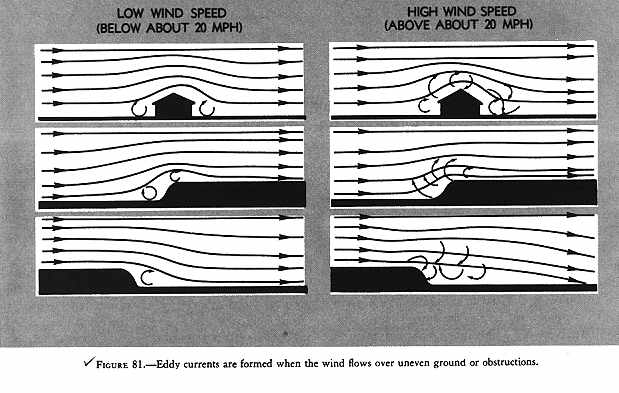
 |
||
| Home | Login | Schedule | Pilot Store | 7-Day IFR | IFR Adventure | Trip Reports | Blog | Fun | Reviews | Weather | Articles | Links | Helicopter | Download | Bio | ||
Site MapSubscribePrivate Pilot Learn to Fly Instrument Pilot 7 day IFR Rating IFR Adventure Commercial Pilot Multi-Engine Pilot Human Factors/CRM Recurrent Training Ground Schools Articles Privacy Policy About Me Keyword:  |
<< Previous | Next
(Glossary)
>>
Chapter 12. CONFINED AREA, PINNACLE, AND RIDGELINE OPERATIONS  A
confined area is an area where the flight of the helicopter is limited
in some direction by terrain or the presence of obstructions, natural
or manmade. For example, a clearing in the woods, a city street, a
road, a building roof, and so on, can each be regarded as a confined
area. A
confined area is an area where the flight of the helicopter is limited
in some direction by terrain or the presence of obstructions, natural
or manmade. For example, a clearing in the woods, a city street, a
road, a building roof, and so on, can each be regarded as a confined
area. Barriers on the surface and the surface itself may interfere with the smooth flow of air, resulting in turbulence. This interference is transmitted to upper air levels as larger but less intense disturbances. Therefore, the greatest turbulence is usually found at low altitudes. Gusts are unpredictable variations in wind velocity. Ordinary gusts are dangerous only in slow flight at very low altitudes. The pilot may be unaware of the gust, and its cessation may reduce airspeed below that required to sustain flight due to the loss in effective translational lift. Gusts cannot be planned for or anticipated. Turbulence, however, can generally be predicted. Turbulence will be found in the following areas when wind velocity exceeds 10 MPH (fig. 81):
Some general rules can be stated that apply to helicopter operations in any type of confined area. The following are some of the more important ones to consider regardless of whether such areas are enclosed, or are slopes or pinnacles.
A pinnacle is an area from which the surface drops away steeply on all sides. A ridgeline is a long area from which the surface drops away steeply on one or two sides, such as a bluff or precipice. Barriers are not usually present on pinnacles or ridgelines; but, if they are, a combination of pinnacle and confined area operations may be necessary when operating into and out of such areas. That is, an area may require a pinnacle-type operation during the approach and landing, but if the strength of the wind dictates the takeoff path and barriers exist under that path, a confined area-type takeoff may be required when departing that area. Conversely, conditions and terrain may justify a confined area-type approach into an area and a pinnacle-type departure from that area. The absence of barriers does not necessarily lessen the difficulty of pinnacle or ridgeline operations. Updrafts, downdrafts, and turbulence, together with unsuitable terrain in which to make a forced landing, may still present extreme hazards. General rules for pinnacle and ridgeline operations The following are some of the more important rules to consider when conducting pinnacle or ridgeline operations:
The primary purpose of the high reconnaissance is to determine the suitability of an area for a landing. In a high reconnaissance, the following items should be accomplished:
LOW RECONNAISSANCE In the low reconnaissance, verify what was seen in the high reconnaissance and check for anything new that may have been missed. Check especially for wires, slopes, and small crevices because these are especially difficult to see from a higher altitude. A low reconnaissance begins shortly after entry to the approach and ends at touchdown. During this time, objects on the surface can be better identified and the height of barriers, if any, better estimated. The view of the approach path is greatly improved. The approach should be as close to a normal approach as possible. If new information warrants a change in flightpath or angle of descent, it should be made; however, if a major change in angle of descent is required, a go-around should be made. If a decision to go around is made, it should be done prior to losing effective translational lift. If a decision is made to complete the approach, the termination should normally be to a hover so the landing point can be carefully checked before the landing is made. Under certain conditions, however, it may be desirable to terminate the approach to the surface. Whether terminating at a hover or on the surface, once the helicopter is on the surface, operating RPM should be maintained until the stability of the helicopter is checked to be sure of a secure and safe position. GROUND RECONNAISSANCE Before takeoff, a ground reconnaissance is made to determine the type takeoff to be performed, to determine the point from which the takeoff should be initiated to ensure the maximum amount of available area and, finally, how to best get the helicopter from the landing point to the proposed takeoff position. The first thing to check is the wind. If the engine is running, walk a sufficient distance from the helicopter to ensure that the downwash of the blades does not interfere. Dust or grass may be dropped and the direction observed in which they are blown. The next step is to go to the downwind end of the available area and mark a position for takeoff so that the tail and main rotors will have sufficient clearance from the obstructions, if any, behind the helicopter. A sturdy marker such as a heavy stone or log should be used so it will not blow away. If wind conditions and available area permit, the helicopter should be brought to a hover, turned around, and hovered forward from the landing position to the takeoff position. Under certain conditions, sideward flight to the takeoff position may be necessary. If rearward flight is required to reach the takeoff position, reference markers should be placed in front of the helicopter in such a way that a ground track can be safely followed to the takeoff position and so the pilot can see the marker for the takeoff position without going beyond it. Your Thoughts... |

|
| Home | Login | Schedule | Pilot Store | 7-Day IFR | IFR Adventure | Trip Reports | Blog | Fun | Reviews | Weather | Articles | Links | Helicopter | Download | Bio |
| All content is Copyright 2002-2010 by Darren Smith. All rights reserved. Subject to change without notice. This website is not a substitute for competent flight instruction. There are no representations or warranties of any kind made pertaining to this service/information and any warranty, express or implied, is excluded and disclaimed including but not limited to the implied warranties of merchantability and/or fitness for a particular purpose. Under no circumstances or theories of liability, including without limitation the negligence of any party, contract, warranty or strict liability in tort, shall the website creator/author or any of its affiliated or related organizations be liable for any direct, indirect, incidental, special, consequential or punitive damages as a result of the use of, or the inability to use, any information provided through this service even if advised of the possibility of such damages. For more information about this website, including the privacy policy, see about this website. |